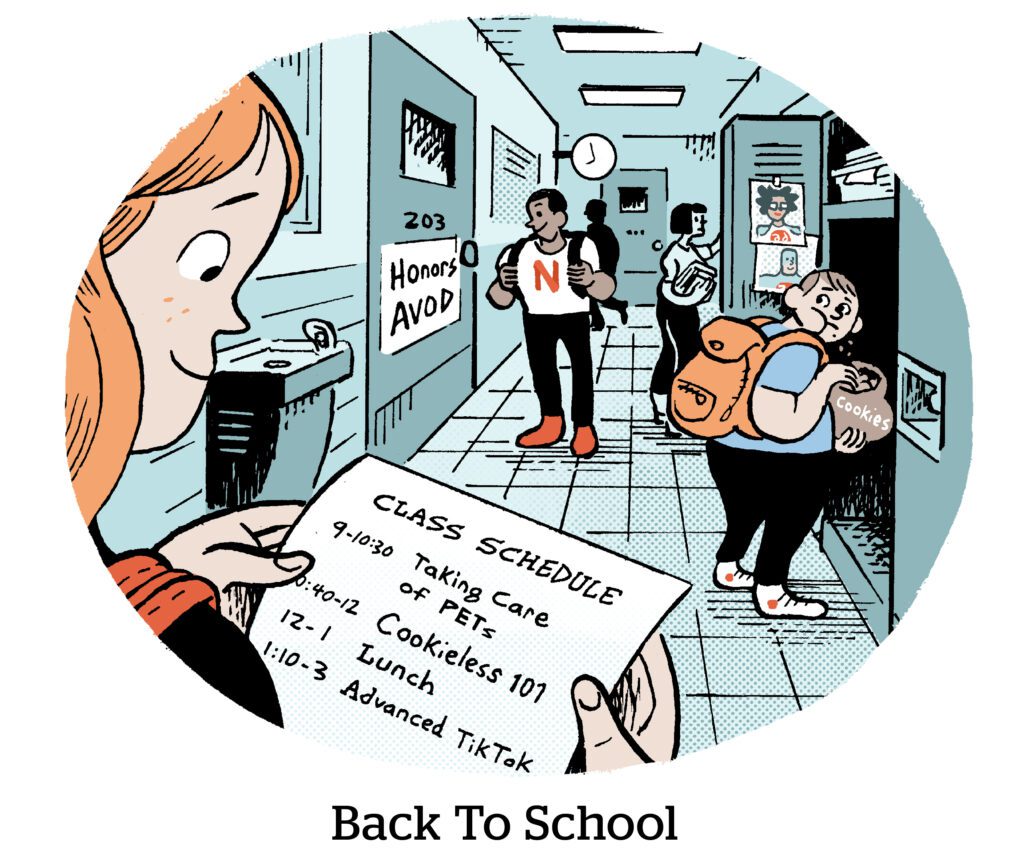Here’s today’s AdExchanger.com news round-up… Want it by email? Sign up here.
Long Story Short
Short-form video content is often thought of as tangentially competitive to traditional TV broadcasters and entertainment studios. That’s partly because short, user-generated social content (TikTok in particular) doesn’t compete directly with TV studios for ad budgets, writes Doug Shapiro, a broadcast vet and senior advisor at BCG. TikTok and TV occupy different blocks of time in people’s day and represent different pieces of the overall audience puzzle that, for now, can exist in tandem.
But although there’s little doubt that YouTube and TikTok will eventually drink TV’s milkshake, Shapiro cites one major weakness of short-form video, which is that studio execs equate quality with high production values, special effects, well-known IP, big-name stars, producers and, well, with being ad-free.
Short-form media doesn’t meet that bar. “But it ranks much higher on other attributes, like virality, surprise, digestibility, relevance to my community and personalization.”
Also, your typical studio exec’s definition of quality is only getting more expensive, while YouTube and TikTok build massive content bases practically for free.
“To the extent that consumers consciously substitute short form for traditional TV,” Shapiro writes, “this reveals that their definition of quality is shifting toward lower-cost attributes, and, in the process, lowering the bar.”
Brick-and-Mortar Gardens
Retail media networks (RMN) need standardization.
For one, retail media is a catchall term for a much wider market of companies that are doing the ad network thing. You’ve got the travel and mobility types (Uber, Lyft, Marriott, TripAdvisor and T-Mobile, to name a few), big-name grocers (Walmart, Target, Kroger-Albertsons) and miscellaneous department stores (Macy’s, Best Buy, Michaels, et al.). Amazon occupies its own subcategory, although you could argue that it is the category, revenue-wise.
Some RMNs allow for true programmatic bidding, with third-party tech able to connect retailer audiences to open web audiences. Others use programmatic pipes but take a walled garden approach with IDs that are attributable, not exportable.
Different RMNs also use different attribution windows and identity services that don’t sync and often are not MRC certified.
The IAB is spearheading efforts next year to whip RMNs into shape, according to Jeffrey Bustos, the IAB’s VP of programmatic, and standard reporting, such as viewability and impression counts, are on the agenda.
“Brands and agencies [should be] able to really understand what they’re getting and do cross-retailer analysis,” Bustos tells Adweek.
But retailers don’t see it that way. Some cross-retailer analysis is possible right now, but most retailers want to become stand-alone walled garden ad networks, not an interconnected web like … the web.
Studio Views
Broadcasters are raking in new streaming viewers – but the profits aren’t adding up.
AMC, for example, can’t effectively monetize top-rated shows like “The Walking Dead” because streaming revenue lags the declines in linear TV subscriptions and advertising.
Broadcasters have two options to improve returns on streaming investments: cut costs or add ads.
AMC is tightening its belt by laying off 20% of its staff. Ads are more complicated for AMC because it signed away the rights for popular titles, including “Mad Men,” The New York Times reports.
Warner Bros. Discovery, meanwhile, is introducing ads to original shows, such as “Game of Thrones” and its spin-off, “House of the Dragon,” Insider reports.
Weaving ads into hit original shows that were produced explicitly for ad-free viewers and have never been advertised against will mean complications for brand suitability and the like, as well as blowback from viewers.
Regardless, the outlook must be bleak indeed if the studios behind “Game of Thrones,” “Walking Dead” and “Mad Men” can’t make it work.
But Wait, There’s More!
The DOJ levies two fines totaling $520 million against Epic Games, maker of Fortnite. Roughly half is a penalty for allowing children to access live chat and video features, and the rest refunds customers for misleading purchases and billing practices. Gotta watch those dark patterns. [TechCrunch]
And the fines don’t stop there: A court in Paris hit Apple with a fine of just over 1 million euros ($1.06 million) for abusive App Store practices. [Reuters]
After just two years, Meta has pulled the plug on Super, a chat and influencer video service billed as a Cameo rival. [Tubefilter]
“Luddite” teens don’t want your likes. [NYT]
Meta CTO Andrew Bosworth on why Meta will continue to commit 20% to metaverse hardware and software investments. [blog]
Elon Musk’s volatility is alienating Twitter’s top content creators. [Bloomberg]
You’re Hired!
Maggy Chan joins NBCUniversal as managing director and EVP of global advertising and partnerships. [release]
Sarah Cardell has been named CEO of the UK’s Competition and Markets Authority. [release]
Claravine hires Justin Shepard as its first CFO. [release]















